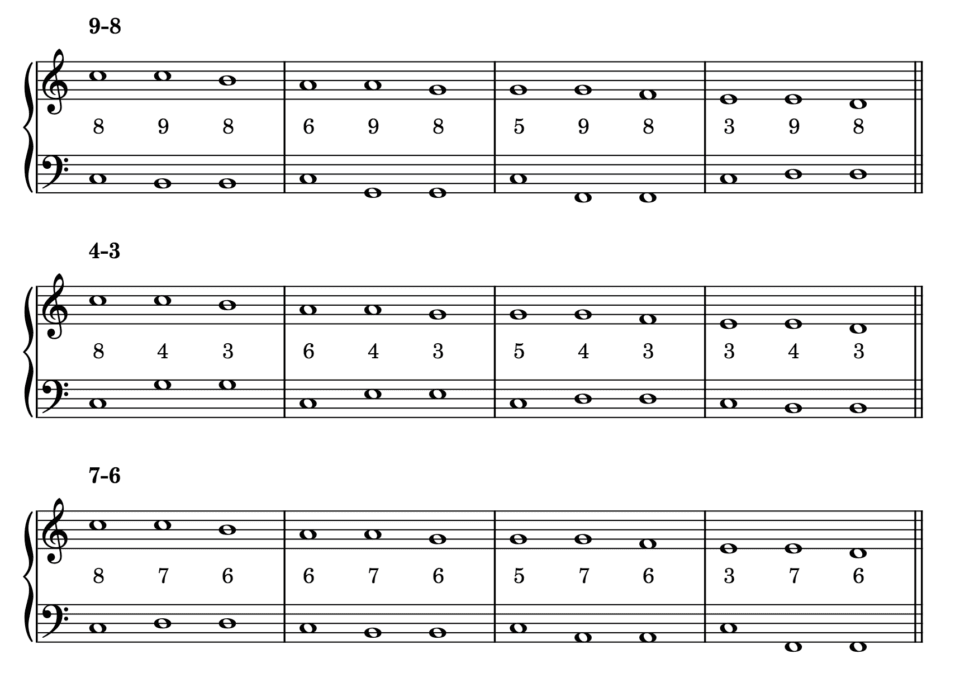Classical dissonance begins with a consonant preparation, continues to the dissonance in question, and finishes with a consonant resolution. Wikipedia says as much.
But as I was falling asleep I started wondering about the topology of suspensions — which suspensions work in which situation. There are three basic suspensions: 9-8, 7-6, and 4-3. In the chart below, I listed all the possibilities of preparation-dissonance-resolution in a somewhat scrambled order:

It turns out the topology of suspensions is somewhat bent. That is to say, not every bass interval is equally represented among each of the suspension categories:
- Upward and downward seconds are capable of supporting any kind of suspension.
- Fifths/fourths can support 9-8 suspensions either upward or downward, but the 4-3 suspension only works with ascending fifths/descending fourths, and the 7-6 suspension only works with descending fifths/ascending fourths.
- Thirds are least capable of supporting suspensions. The direction of the third mandates the suspension type. The ascending third can support a 4-3 suspension. The descending third can support a 7-6 suspension.
I’m sure there’s some math to explain the asymmetrical distribution of bass intervals, but for 11:30 on a Thursday night, I’m going to leave this observation stand as is.
Sign up to stay in the loop about my music—and ideas for your own composing!


